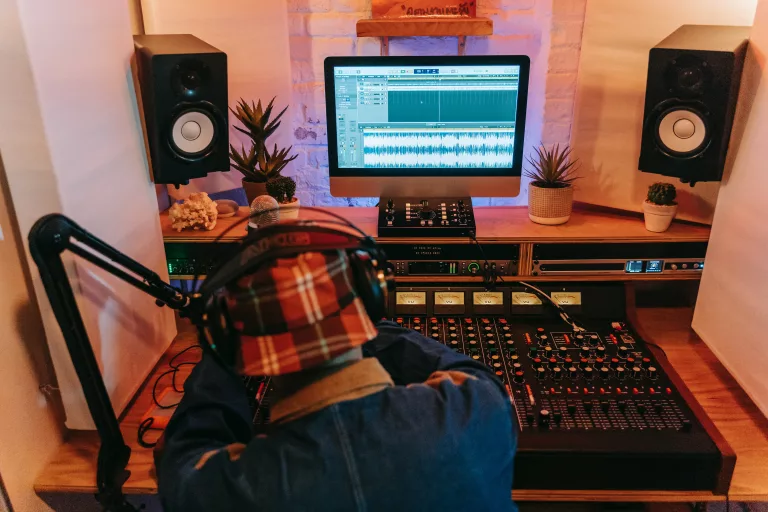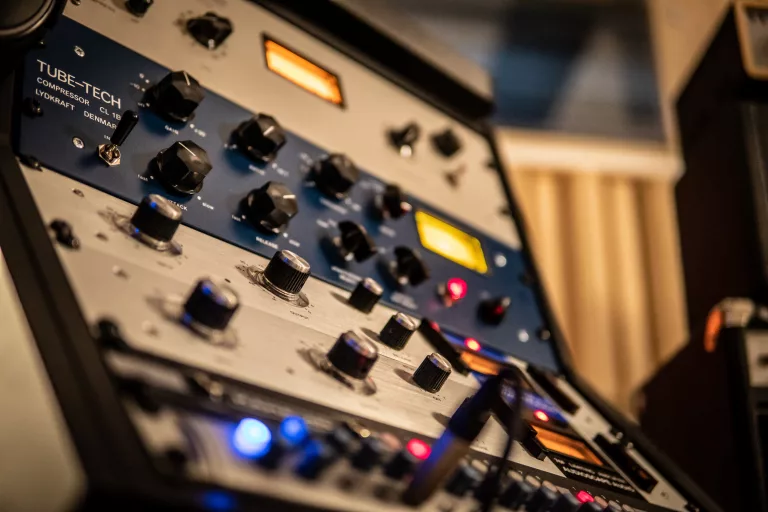The 10 common mistakes to avoid in audio mastering.
The impact of mastering errors on the sound quality of a music production is significant. Poor mastering can result in undesirable distortion, loss of clarity, unbalanced frequencies, and destroyed dynamics. These issues can thus affect how the music is perceived by the audience and can completely ruin the potential of a track. Therefore, recognizing the importance of mastering and understanding how to avoid these errors is crucial. By identifying and avoiding these pitfalls, music producers and sound engineers can ensure that their music retains its integrity and optimal sound throughout the mastering process.
Error 1: Ignoring the acoustics of the mastering room.
Firstly, the acoustics of the work space is crucially important. The final sound quality largely depends on how sound waves propagate and are captured in this environment. Ignoring this aspect can lead to disappointing results.


To avoid this mistake, it is imperative to take measures to improve the acoustics of your mastering space. This often includes the use of acoustic panels, diffusers, and adjusting the speaker layout. Good acoustics ensure that the decisions made during mastering are based on a reliable sound environment. This leads to optimal sound quality for your music.
Error 2: Using inadequate monitors.
The choice of studio monitors is essential for high-quality audio mastering. Opting for inadequate monitors can have a significant impact on how you perceive the music you’re mastering.
To avoid this mistake, it is crucial to select high-quality studio monitors. This will provide you with accurate and neutral sound reproduction. You must ensure that your monitors are well balanced in terms of frequencies, with adequate low-frequency response to perceive all the details of your music. Additionally, properly calibrate your monitors to faithfully reproduce sound. Investing in quality monitors is therefore essential to ensure that your decisions are made based on listening. This contributes to exceptional sound results.
Error 3: Using automatic mastering websites
Using automatic mastering sites is a mistake that can seriously compromise the sound quality of your music. Although these services promise a quick and inexpensive solution, they often lack the human attention and expertise required for quality mastering. As a result, algorithms cannot take into account the artistic and technical specificities of each track in a personalized way.


As a result, your music risks losing its uniqueness and character. To achieve exceptional sound results, it is strongly recommended to call a professional sound engineer.It can therefore add a personal touch, adjust the parameters precisely. Your music will therefore be treated with the greatest care to achieve its maximum potential in terms of sound quality.
Error 4: Neglecting the importance of EQ.
In the audio mastering process, the fourth mistake to avoid is neglecting the importance of equalization (EQ). EQ is an essential tool for refining the sound quality of a track but its use requires a deep understanding. Avoiding excess is therefore crucial. Avoid pushing EQ settings to the extreme; subtle adjustments are key. Instead, focus on correcting specific problems by emphasizing important frequency ranges, and reducing those that are undesirable.
A subtle approach to equalization helps improve the clarity, presence, and balance of the final mix, contributing to a superior audio mastering. Keep in mind that equalization must always be done with precision, preserving the integrity of the music while correcting imperfections. The use of passive EQ and mid/side techniques are also important approaches that will be addressed in a future article.
Error 5: Too much compression.
The number 5 mistake in audio mastering is often related to an excessive use of compression. Compression is a powerful tool to control the dynamic range of a track, but its abuse can be detrimental. Excessive compression can lead to a loss of life and naturalness in the sound, by flattening peaks and removing essential dynamics. To avoid this mistake, it is essential to apply compression in a judicious way.


Identify the sections of the music that require compression, such as overly strong transients, and adjust the settings subtly. The goal is to maintain dynamics while controlling levels, which will contribute to a balanced and pleasant sound during audio mastering. This step is usually extensively addressed during the mixing phase, while in mastering, you will mainly focus on controlling the overall dynamics of the track. It should be noted that color compression is often preferred and/or accumulated during this phase. Always ensure to respect the integrity of the adjustments made during the mixing phase.
FreeSong Analysis
FreeMastering Sample
Error 6: Neglecting dynamics.
The number 6 mistake in audio mastering is neglecting the importance of dynamics. Musical dynamics are the variation in sound intensity between quiet and loud parts of a track. Thus, dynamics play a crucial role in expressing and carrying the emotion of the music. Too much compression or excessive processing can lead to a loss of dynamics, making the music sound flat and lifeless.


To avoid this mistake, it is essential to preserve dynamics while improving sound cohesion. This means choosing wisely when to apply compression and making sure not to remove the natural energy of the music. A balanced approach will help to maintain the liveliness and emotion of the music throughout the mastering process.
Error 7: Ignoring the output format
The number 7 mistake in audio mastering is not considering the output format. Choosing the right output format is crucial to ensure that your music is broadcasted in the desired way. Ignoring this step can therefore lead to a poor listening experience on various platforms.


It is essential to understand the requirements of different formats, whether it is for streaming, CDs, or other platforms, and adapt mastering accordingly. By taking into account the format specifications, you ensure that your music sounds its best on each platform. This preserves its sound quality and impact, regardless of the means of distribution.
Error 8: Missing reference
The number 8 mistake in audio mastering is to neglect the process of referencing. Audio references are essential to objectively evaluate the sound quality of your work. Ignoring this step can leave you in the dark about how your music compares to similar high-quality professional recordings.


To avoid this mistake, it is crucial to choose appropriate references that share similar sound characteristics to the ones you aim for your own track. Paying close attention to these references will allow you to make more informed mastering decisions, adjust sound details, and aim for optimal sound quality, ensuring that your music stands out favorably in the market.
Error 9: Do not let the ears rest.
The number 9 mistake in audio mastering is not letting your ears rest. Auditory fatigue is a common trap in the mastering process. Working for long hours without breaks can alter your auditory perception, causing you to make less precise mastering decisions. To avoid this mistake, it is essential to take regular breaks and allow your ears to rest.


When returning to your work with fresh ears, you can better detect sound details and accurately adjust the sound of your track. Taking regular breaks is an essential practice to maintain the quality of your mastering and achieve the best possible sound results.
Error 10: Neglecting mono listening. "ALL IN SIDES".
Neglecting mono listening is a common mistake in audio mastering. Often, listeners hear music through mono systems such as radios, mono Bluetooth speakers, or streaming devices with limited bandwidth. Ignoring this crucial step can result in phase problems, stereo coherence, and compatibility issues, thereby reducing the overall sound quality of your music in these conditions.


To avoid this mistake, it is essential to regularly perform mono checks during mastering. This will allow you to detect and correct potential issues related to mono compatibility, ensuring that your music sounds as good in mono as it does in stereo, no matter how it’s being listened to.
In conclusion, avoiding these common audio mastering mistakes is essential to ensure the sound quality of your music. By paying special attention to the acoustics, monitors, EQ, compression, dynamics, output format, references, breaks, and other mentioned aspects, you can create an audio mastering that stands out and honors your music. Remember that well-executed mastering can transform an ordinary track into an exceptional work of art.


